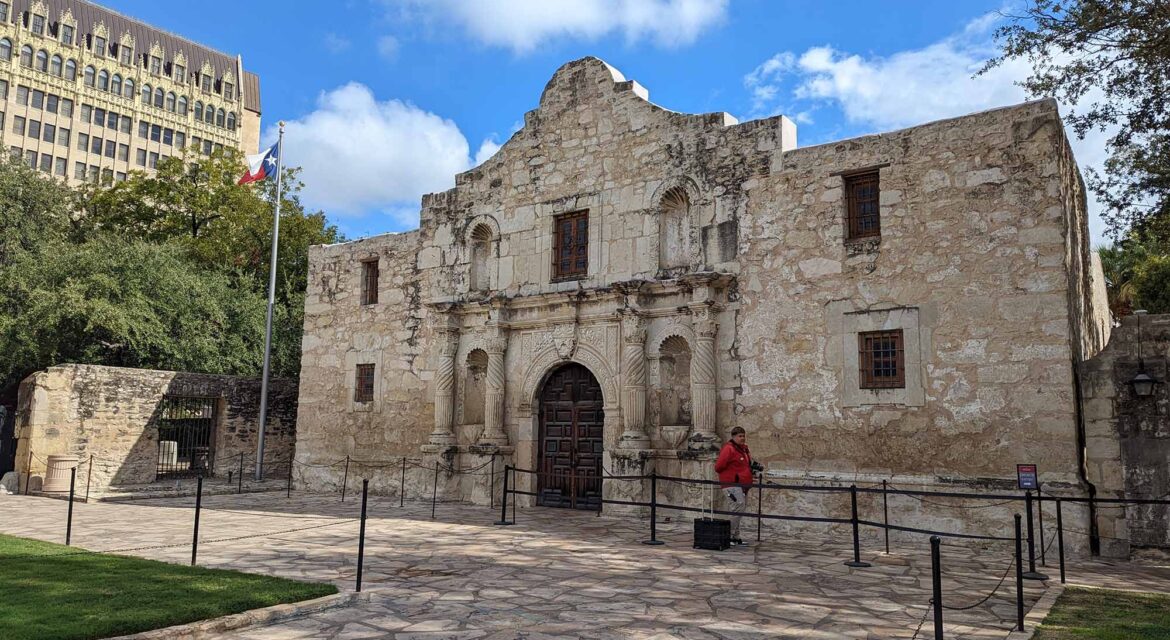 Originally built as the chapel of the Mission San Antonio de Valero, what is today known as the Alamo Church is one of the most recognizable and essential pieces of history at The Alamo in San Antonio, Texas. The protection and cultivation of the legacy that it represents highlights what it can mean for a larger landmark to be built upon and around an essential piece of history.
Originally built as the chapel of the Mission San Antonio de Valero, what is today known as the Alamo Church is one of the most recognizable and essential pieces of history at The Alamo in San Antonio, Texas. The protection and cultivation of the legacy that it represents highlights what it can mean for a larger landmark to be built upon and around an essential piece of history.

From Church to Fort to Legend
 The Misión San Antonio de Valero was one of the early Spanish missions in Texas, first established in 1718. A stone chapel was begun around 1758 but was never completed as intended. This half-finished structure would serve as a hospital and eventually as a fort during the Texas Revolution, which included the Battle of the Alamo in 1836. The conflict proved to be a turning point in the Texas Revolution.
The Misión San Antonio de Valero was one of the early Spanish missions in Texas, first established in 1718. A stone chapel was begun around 1758 but was never completed as intended. This half-finished structure would serve as a hospital and eventually as a fort during the Texas Revolution, which included the Battle of the Alamo in 1836. The conflict proved to be a turning point in the Texas Revolution.
The structure was used by the army over the next few decades, with the scalloped roof line being added in 1849. Over the following decades it was used as a church, store and warehouse. In the 1890s, the Daughters of the Republic of Texas (DRT) made an effort to see the building restored, leading to various battles over ownership that would eventually see the state of Texas take control of the property. It was designated a National Historic Landmark in 1960 and was documented by the Historic American Buildings Survey in 1961.
Featuring traces of the Battle of the Alamo itself, the Alamo Church housed women and children in the sacristy for safety while also proving to be a key strategic location for the battle. This history is directly and indirectly evident across the modern site, enabling audiences to connect with this history on a whole new level in a way that is connected to direct revenue, indirect engagement and beyond. 
A Shrine of Texas Liberty
 In the early 2000s, The Alamo welcomed over four million visitors each year. The history that that location protects and preserves has enabled a legacy that is connected to the past and future of the state and nation, ensuring audiences of all eras can interact with it.
In the early 2000s, The Alamo welcomed over four million visitors each year. The history that that location protects and preserves has enabled a legacy that is connected to the past and future of the state and nation, ensuring audiences of all eras can interact with it.

